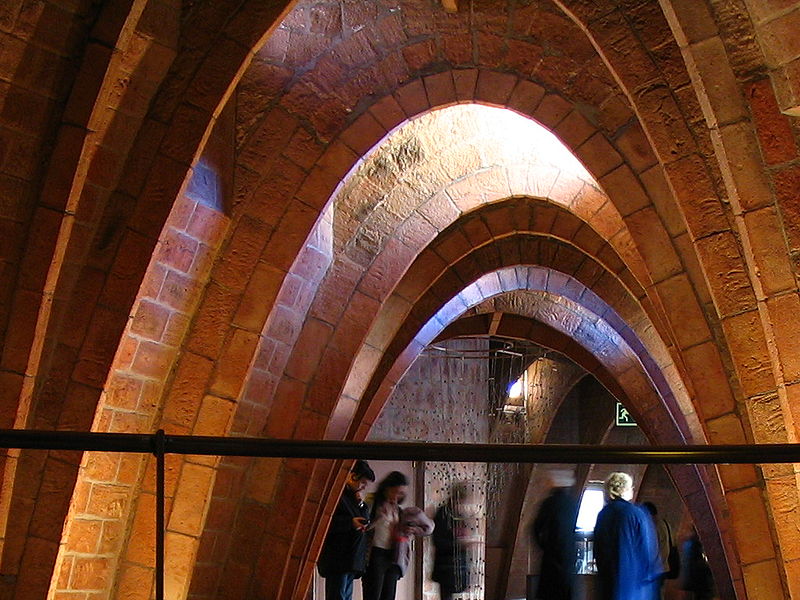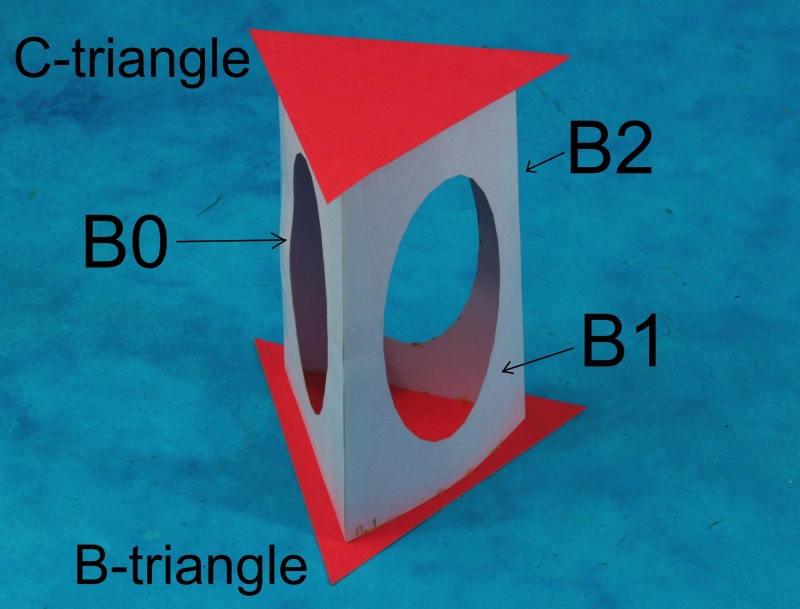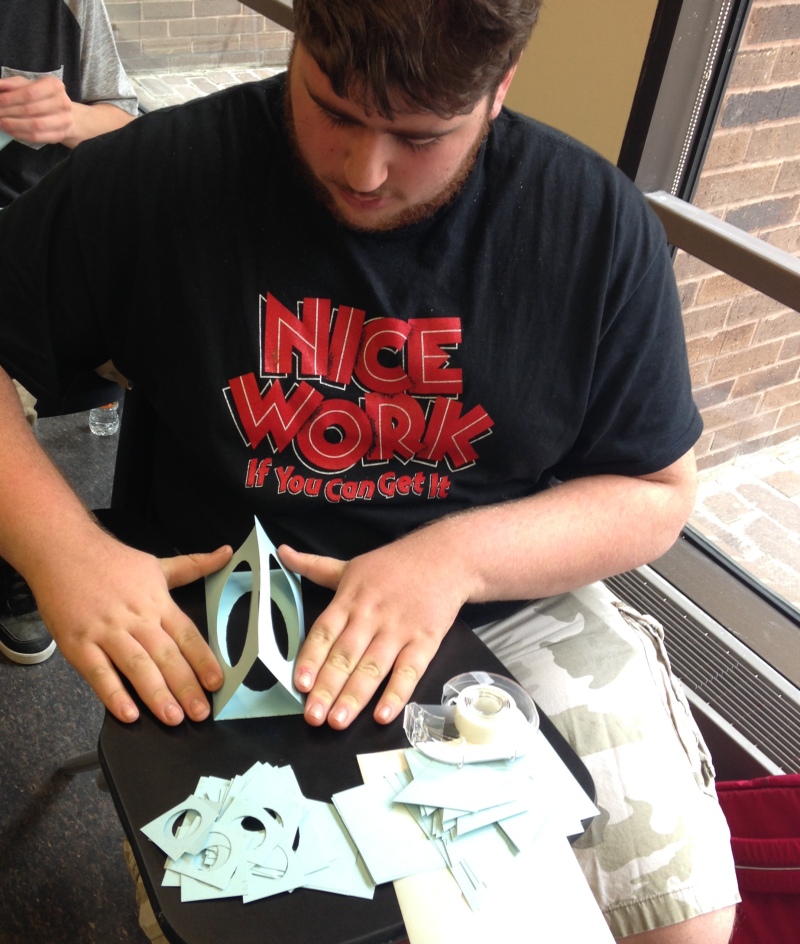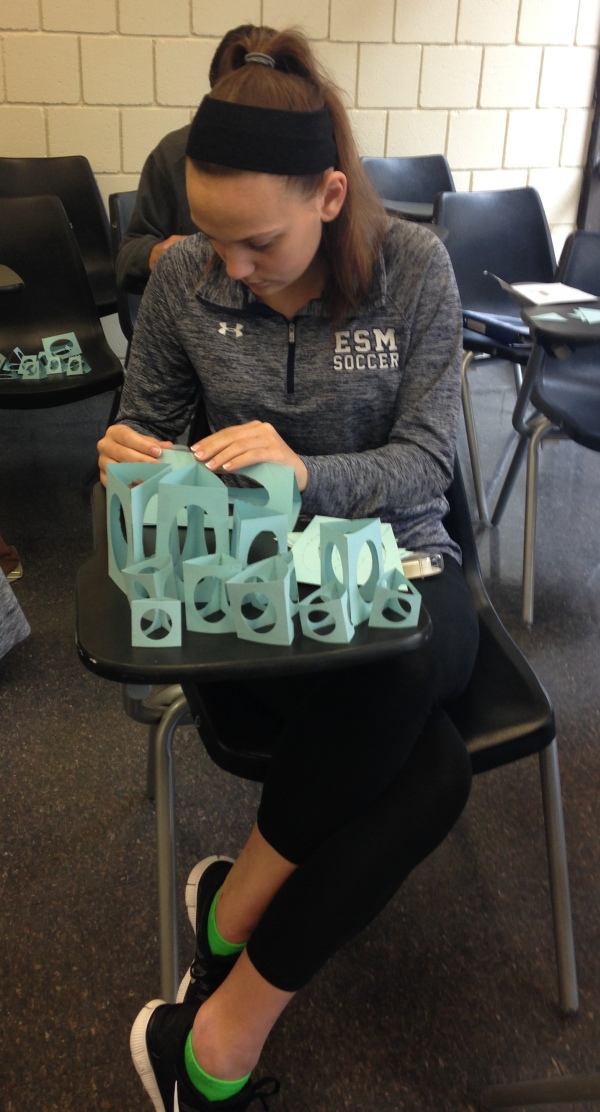
This workshop results in the beautiful paper
arch shown above. If the paper components are very carefully cut
out and assembled as described below, the thirteen modules will
balance together to make a freestanding structure. This
requires very precise fabrication. An optional variation
is to tape or glue the modules together, in which case precision
is not as essential, and students can still understand the
structure. The instructions below are for the high-precision
version.
Time Required: 1.5 Hours







